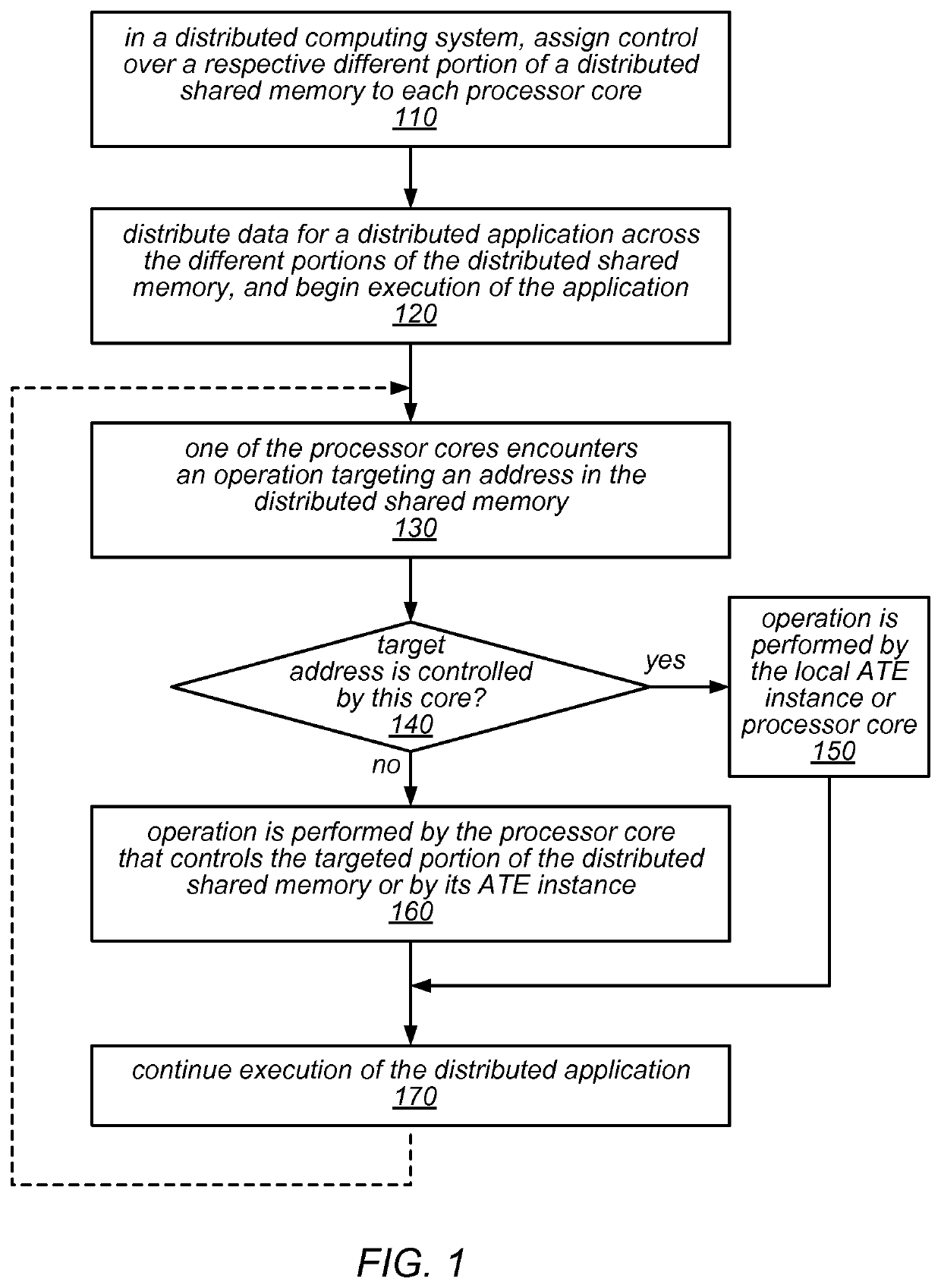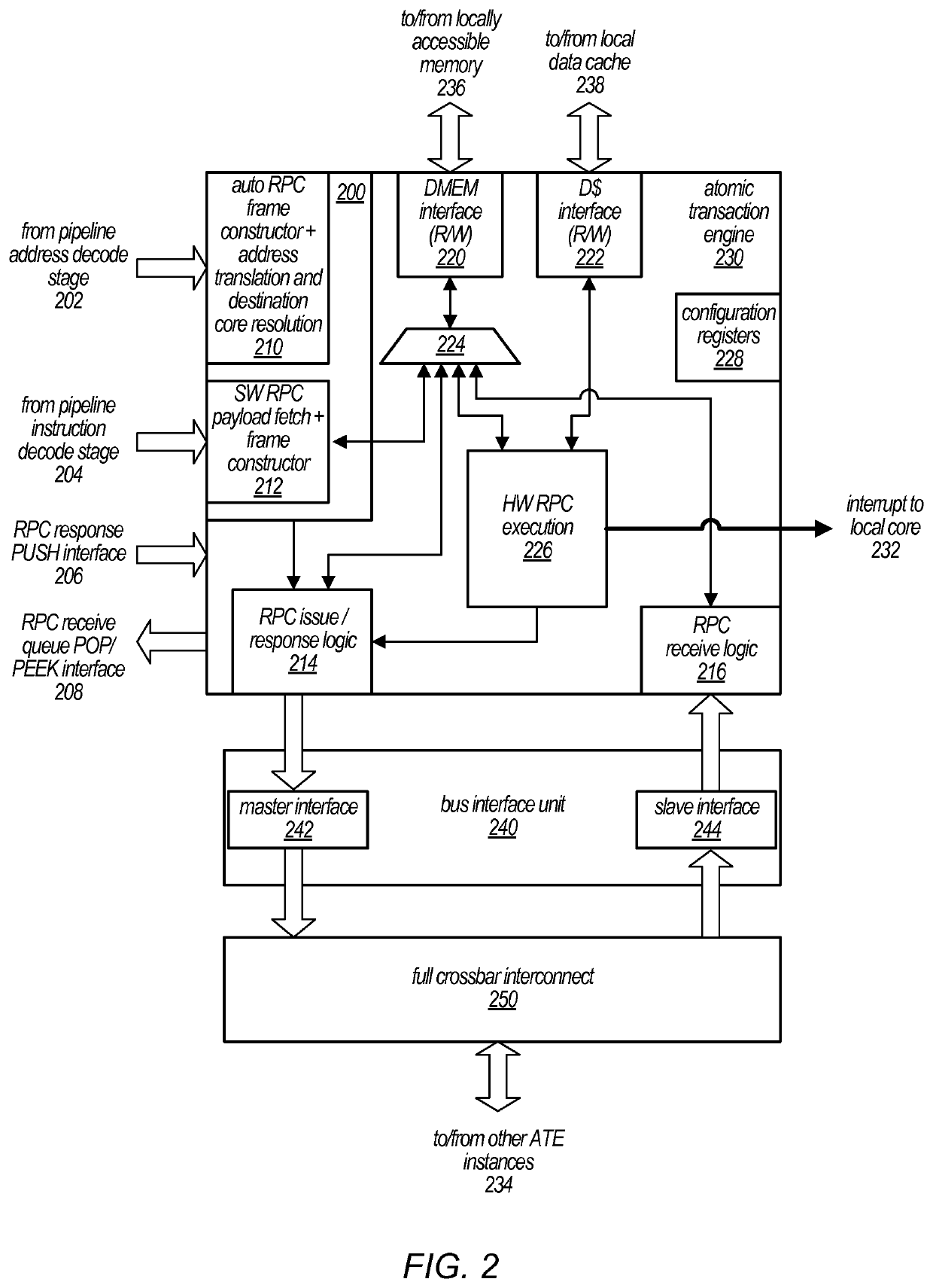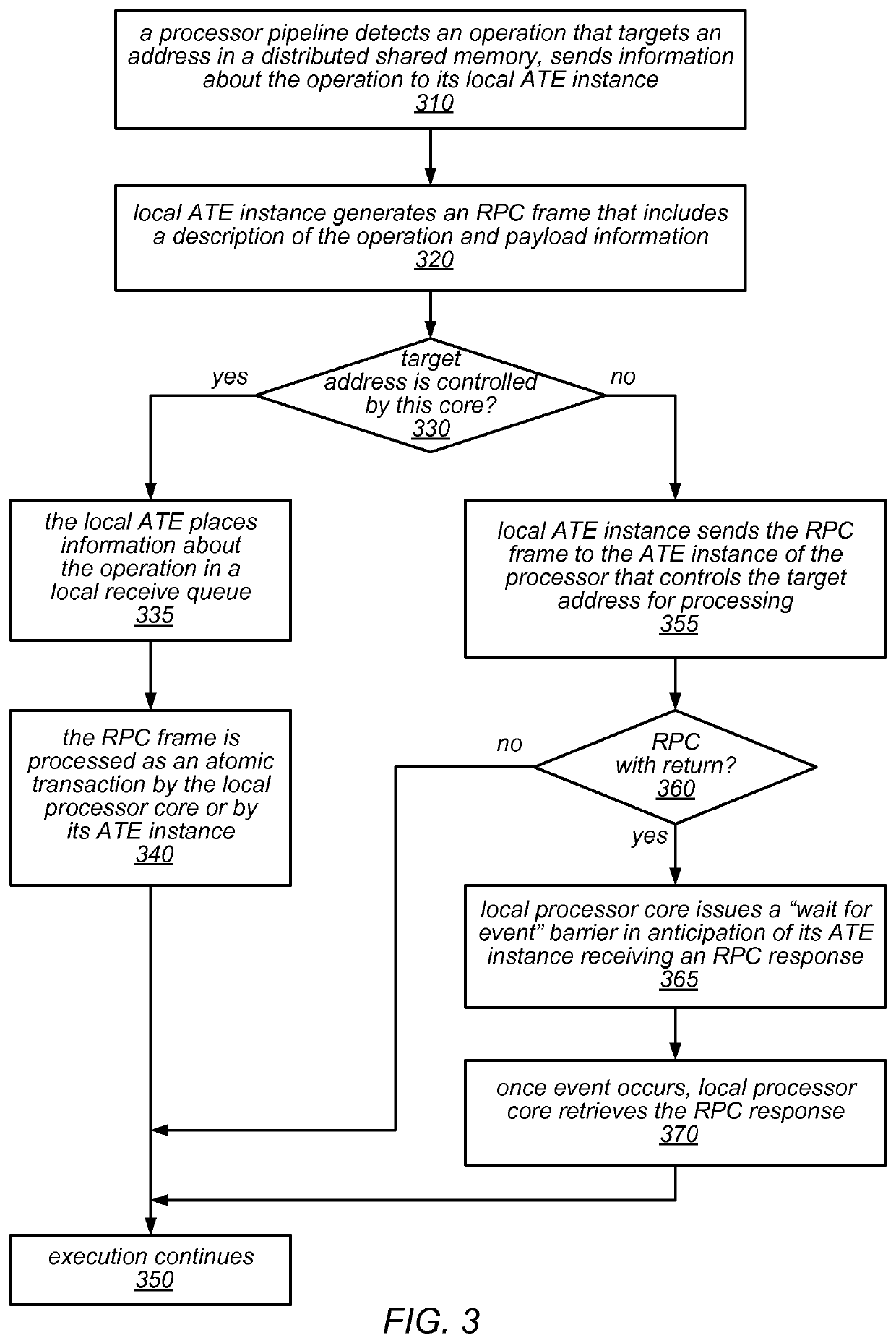Distributed shared memory using interconnected atomic transaction engines at respective memory interfaces
a technology of interconnected atomic transaction engines and shared memory, which is applied in the direction of multi-programming arrangements, instruments, program control, etc., can solve the problems of inability to meet the requirements of shared memory systems and traditional distributed memory systems, incur significant overhead, and typically involve significant latencies in accessing shared data in dsms, so as to achieve less complexity, light weight, and high overall performance
- Summary
- Abstract
- Description
- Claims
- Application Information
AI Technical Summary
Benefits of technology
Problems solved by technology
Method used
Image
Examples
Embodiment Construction
[0023]As noted above, in traditional distributed memory systems, the shared data is distributed using either a replication or migration strategy. Both replication and migration strategies involve moving data closer to the processor that wants to operate on it, and both strategies incur significant overhead in order to maintain data consistency across all processing nodes. In various embodiments, the hardware-assisted distributed memory systems described herein may include software configurable shared memory regions in each individual core's local memory as well as in the main system memory. In these systems, access to the shared memory regions may be through a network of on-chip Atomic Transaction Engine (ATE) instances (e.g., one per processor core), and a private interconnect matrix that connects all of the ATE instances together. Each ATE instance may issue Remote Procedure Calls (RPCs) to other ATE instances for operations in which the target address of the operation falls in an...
PUM
 Login to View More
Login to View More Abstract
Description
Claims
Application Information
 Login to View More
Login to View More - R&D
- Intellectual Property
- Life Sciences
- Materials
- Tech Scout
- Unparalleled Data Quality
- Higher Quality Content
- 60% Fewer Hallucinations
Browse by: Latest US Patents, China's latest patents, Technical Efficacy Thesaurus, Application Domain, Technology Topic, Popular Technical Reports.
© 2025 PatSnap. All rights reserved.Legal|Privacy policy|Modern Slavery Act Transparency Statement|Sitemap|About US| Contact US: help@patsnap.com



